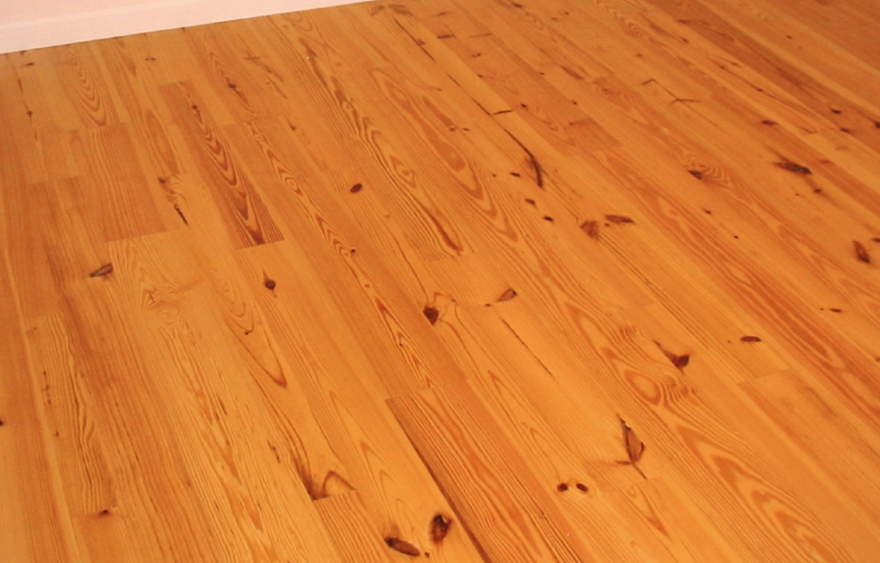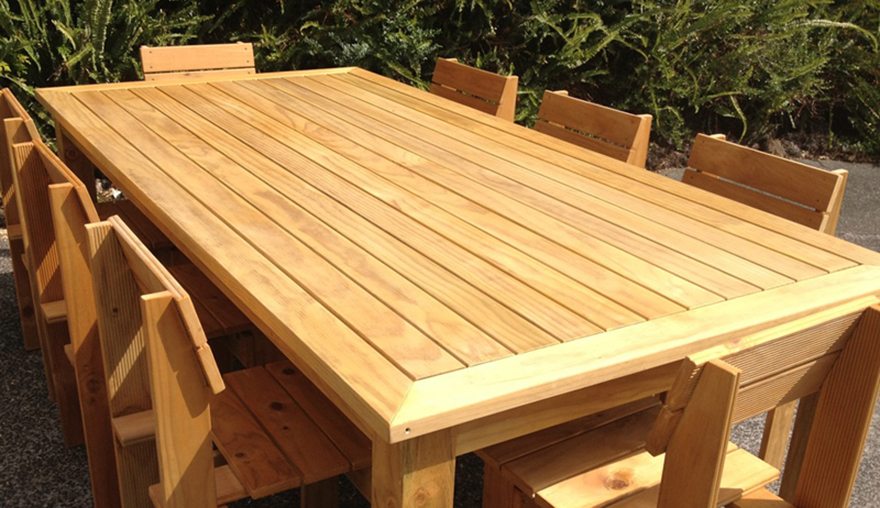An Introduction To Wood Species, Part 2: Pine

This Wood Species series comes to us from guest writer Rob Wilkey, an Atlanta-based woodworker and industrial designer whose expertise is in small home goods, furniture, and large installations.
* * *
Over the next few articles, we'll be analyzing a number of common domestic wood species. Up first:

Pine is the most abundant type of wood in North America. Dozens of species are harvested here, their colors ranging from pale yellow to light reddish brown. Although some pines can exceed 900lbf on the Janka hardness scale, most are much softer, commonly below 500lbf. Despite its softness, pine has remarkable structural stability and is generally resistant to seasonal movement. Pine is also extremely inexpensive, making it the ideal candidate for large-scale structural work, such as framing for houses.

Pine's grain structure and working properties are largely similar across the different species. All pine is straight-grained and ring-porous, showing its growth rings as dark bands throughout the wood. Pine boards frequently contain a number of knots, which can be problematic during cutting, but the wood is otherwise very easy to work with. Despite its low density, pine isn't highly porous and takes glues, stains, and finishes very well. While most species of pine are too soft for use outside of structural supports, the denser species are commonly used for flooring, wall panels, and furniture. The contrasting grain and abundance of knots give pine an interesting, 'rustic' look.

Untreated pine lumber is susceptible to decay and insect damage, and for this reason the lumber is commonly pressure-treated. This treatment makes the wood weather-resistant, but can change the color and make staining and finishing more difficult. Pressure-treated pine is very useful for decking, outdoor furniture, and other outdoor structures.

If you plan to keep your project indoors, however, opt for the untreated lumber. Clean up surfaces with a planer (sanding can create uneven surfaces, as the dark rings are more dense than the lighter wood), and apply a good coat of finish. Pine is often overlooked, but when treated correctly, it can be remarkably beautiful.

In summary, pine may often look mundane, and is too soft to qualify as a 'hardwood', but its low price and unique appearance make it an ideal candidate for large-scale projects.
Next week, we'll look at the unique properties of another abundant domestic species - Oak - and learn why it is the wood of choice for whiskey barrels.
Material Matters: Wood
Species:
» An Introduction To Wood Species, Part 1: Properties & Terminology
» An Introduction To Wood Species, Part 2: Pine
» An Introduction To Wood Species, Part 3: Oak
» An Introduction To Wood Species, Part 4: Maple
» An Introduction To Wood Species, Part 5: Walnut
» An Introduction To Wood Species, Part 6: Cherry
» An Introduction To Wood Species, Part 7: Mahogany
» An Introduction To Wood Species, Part 8: Rosewood
» An Introduction To Wood Species, Part 9: Ebony
» An Introduction To Wood Species, Part 10: Teak
How Boards are Made:
» How Logs Are Turned Into Boards, Part 1: Plainsawn
» How Logs Are Turned Into Boards, Part 2: Quartersawn
» How Logs Are Turned Into Boards, Part 3: Riftsawn
Wood Movement:
» Wood Movement: Why Does Wood Move?
» Controlling Wood Movement: The Drying Process
» Dealing with Wood Movement: Design and Understanding
-
oFavorite This
-
QComment
K
{Welcome
Create a Core77 Account
Already have an account? Sign In
By creating a Core77 account you confirm that you accept the Terms of Use
K
Reset Password
Please enter your email and we will send an email to reset your password.



